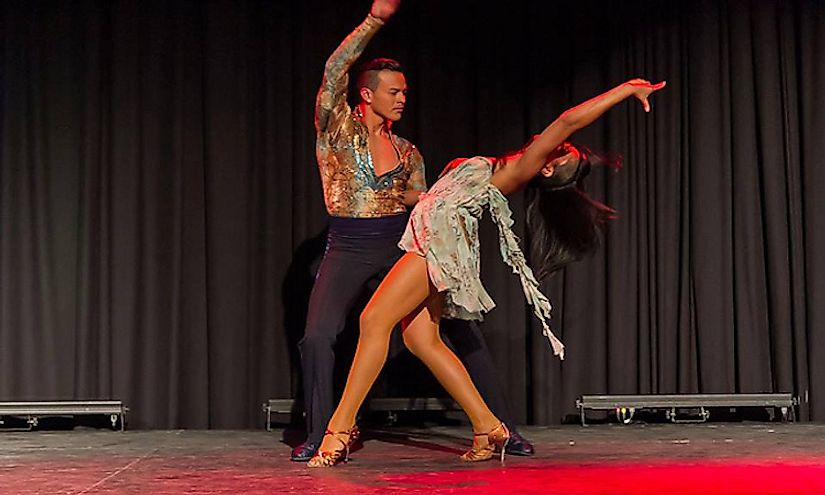7 Easy Facts About Dance San Francisco Described
Dance San Francisco - Truths
Table of ContentsThe Main Principles Of Dance San Francisco Some Known Facts About Dance San Francisco.The Single Strategy To Use For Dance San FranciscoAll About Dance San Francisco
Allow's believe of Salsa dancing and music as a large Tree that resembles this: Salsa is danced global while lots of technical elements of the dancing are the exact same throughout designs (6 steps over 8 beats danced on a quick-quick-slow or slow-quick-quick rhythm), there are a number of "trademark" attributes of the main designs of Salsa that identify one from the other.Pairs participating in a Casino Rueda dance all relocations in unison as called by a Leader. Distinguishing features of Cuban style salsa are round turn patterns (with "break back" actions on counts 1 and 5) along with body language motivated by typical Afro-Cuban folkloric dances. Distinguishing features of Cali design salsa fasts and complex footwork, danced with a strong hand hold connection between partners.
The origins of the style are a subject of discussion, yet it is claimed that New york city style Salsa dancing came from the 1960's because of the increase of Latin American emigrants after the Cuban Change (salsa dancing sf). Eddie Torres is the most popular New york city style professional dancer, being virtually globally attributed with popularizing the style to dance centres outside of New york city
The standard rhythm of "On-2" is slow-quick-quick. The "youngest" of the styles of Salsa, L.A (https://dance-san-francisco.jimdosite.com/). Style (some people have actually called it "West Coast" design) came to be prominent in the 1990's and has its beginnings in ballroom (Mambo, Swing and Cha, Cha, Cha). Transform patterns lead and follow methods are heavily affected by these styles, with the Cross Body Lead being the foundation of the style
Getting The Dance San Francisco To Work
Design are execution of turn patterns and figures in the "slot", with the break actions on matters "1" and "5". This design is also characterized by fancy and frequently intricate arm styling by the comply with to accent the "1" and "5" counts. The basic rhythm of "On-1" is quick-quick-slow. While Salsa songs has solid origins in Cuban, Colombian and Puerto-Rican folkoric customs, it can not be marked down that all Afro-Latin and Latin American societies have actually added to contemporary Salsa music as we understand it today.


Everything about Dance San Francisco
differentiating features of Salsa songs are: 4/4 measure signature, Boy Clave and Tumbao rhythms, Montuno Piano Unless you have a background in songs, the above 3 qualities most likely suggest nothing to you. An easier means to explain Salsa music is exactly how it does NOT seem like various other kinds of Latin American music.

It's time for lessons. With many studios out there and different styles to pick from, where does a complete beginner begin? A lot of all new dancers select to learn L.A. "On-1" design slotted Salsa styles are one of the most common in North America (with some exceptions of some city centres that still primarily accept Cuban and Puerto Rican designs) and L.A.
.A. Style will swiftly show you the principles of Salsa timing, weight transfer and transform pattern execution. Several professional dancers, as soon as they've had a year or two of dancing L.A. Design Salsa under their belts, "button" to New york city design in order to expand their dance vocabulary; yet numerous dancers decide to stick to simply one design of Salsa and enjoy their time on the dance floor because certain design. salsa dancing sf.
Style and New York Style all being danced in the exact same club, with a lot of the professional dancers having the ability to switch over from one design to the various other from one song to the next. salsa dancing sf. Despite which style you select it is essential to stick to that style until you're extremely comfortable with the basics of timing, body rhythm click for more and structure relocation implementation before taking into consideration "switching" designs (if you wish to)
When you start lessons prepare to commit energy and time to discovering exactly how to dance generally it takes a complete rookie (i. e., somebody with little or no dancing experience) regarding 6 months of actively taking lessons and going out and exercising at the very least twice a week to get to a factor where pattern implementation begins to feel "all-natural".